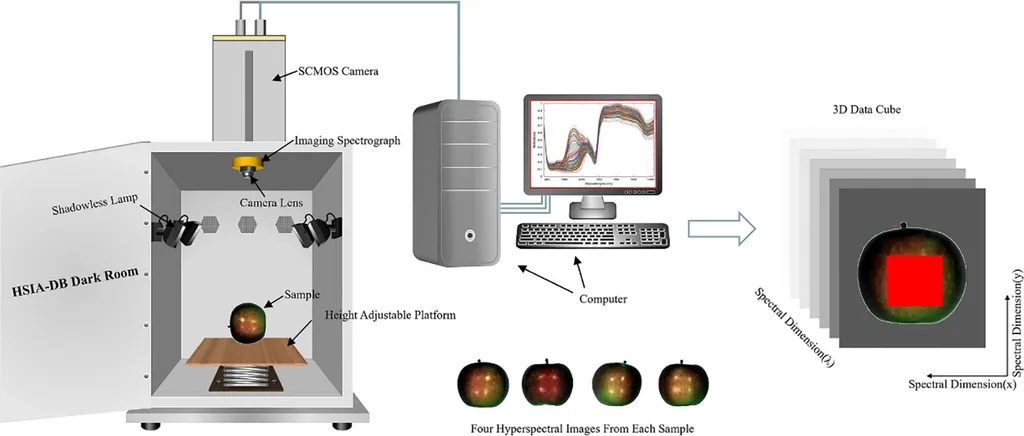In the heart of India’s bustling tech and agricultural landscape, a groundbreaking dataset is set to revolutionize how we assess fruit quality, with implications that stretch far beyond the orchard. Shilpa Gaikwad, a researcher from the Symbiosis Institute of Technology in Pune, has spearheaded a project that could transform the way we evaluate apples—one of the world’s most popular fruits—and potentially other produce, too.
The study, published in *Data in Brief* (which translates to “Data in Brief” in English), introduces a detailed database for apple quality inspection using a cost-effective, self-designed multi-spectral imaging system. This system is optimized to capture spectral information in eight discrete wavebands, enabling non-destructive determination of key fruit components such as ripeness, sugar type, and cultivar. “This dataset is a game-changer,” Gaikwad explains. “It allows us to evaluate apples in a way that is both precise and non-invasive, which has significant implications for the agricultural and food industries.”
The dataset encompasses 32,463 multi-spectral images across three distinct classification categories: sweetness, ripeness, and variety. For sweetness evaluation, 1,620 images spanning Brix values from 10% to 15% were collected from five apple varieties. Ripeness evaluation includes 29,160 images documenting the complete maturation cycle over 18 days, while variety classification contains 1,683 images from three distinct cultivars. Each image was captured under controlled lighting conditions using eight specific wavelengths, ensuring spectral consistency crucial for machine learning applications.
The images were concatenated for grading by sweetness, ripeness, and variety, creating a processed dataset optimized for AppleNet processing. This concatenation process combines the eight wavelength channels into unified image representations suitable for deep learning applications. “By combining these spectral channels, we can create a more comprehensive picture of the fruit’s quality,” Gaikwad notes. “This is essential for training machine learning models to accurately classify and evaluate apples.”
The sample collection involved picking different apple cultivars at various physiological development phases from local orchards. Single specimens were imaged sequentially using a multi-spectral technique. Information on sugar content concentration (Brix), maturation phase classification, and varietal identification was recorded according to standard laboratory procedures. The resulting annotated database includes quantitative reference points, which can be used to train supervised learning classifiers in computational classification systems.
The reuse value of the dataset covers a wide range of applications, including machine learning-based fruit quality evaluation, agricultural automation, and food industry examination. This dataset can be used by researchers to develop and test algorithms to classify apples and estimate their ripeness and the presence of diseases. Furthermore, the proposed multi-spectral imaging can be generalized to cover other fruits and agricultural products, extending the application of the method in smart agriculture.
“This dataset serves as a valuable resource for researchers in computer vision, machine learning, and agricultural technology,” Gaikwad says. “It fosters advancements in non-destructive fruit quality evaluation methodologies, which can ultimately lead to more efficient and sustainable agricultural practices.”
The implications of this research are vast. For the agricultural sector, the ability to non-destructively evaluate fruit quality can lead to more efficient sorting and grading processes, reducing waste and improving marketability. For the food industry, it can ensure consistent product quality and enhance consumer satisfaction. Moreover, the potential to extend this methodology to other fruits and agricultural products opens up new avenues for innovation in smart agriculture.
As we look to the future, the dataset developed by Gaikwad and her team could pave the way for more advanced and automated quality control systems in agriculture. By leveraging machine learning and multi-spectral imaging, we can expect to see significant improvements in the way we assess and manage fruit quality, ultimately benefiting producers, processors, and consumers alike. This research not only highlights the potential of technology in agriculture but also underscores the importance of interdisciplinary collaboration in driving innovation.

